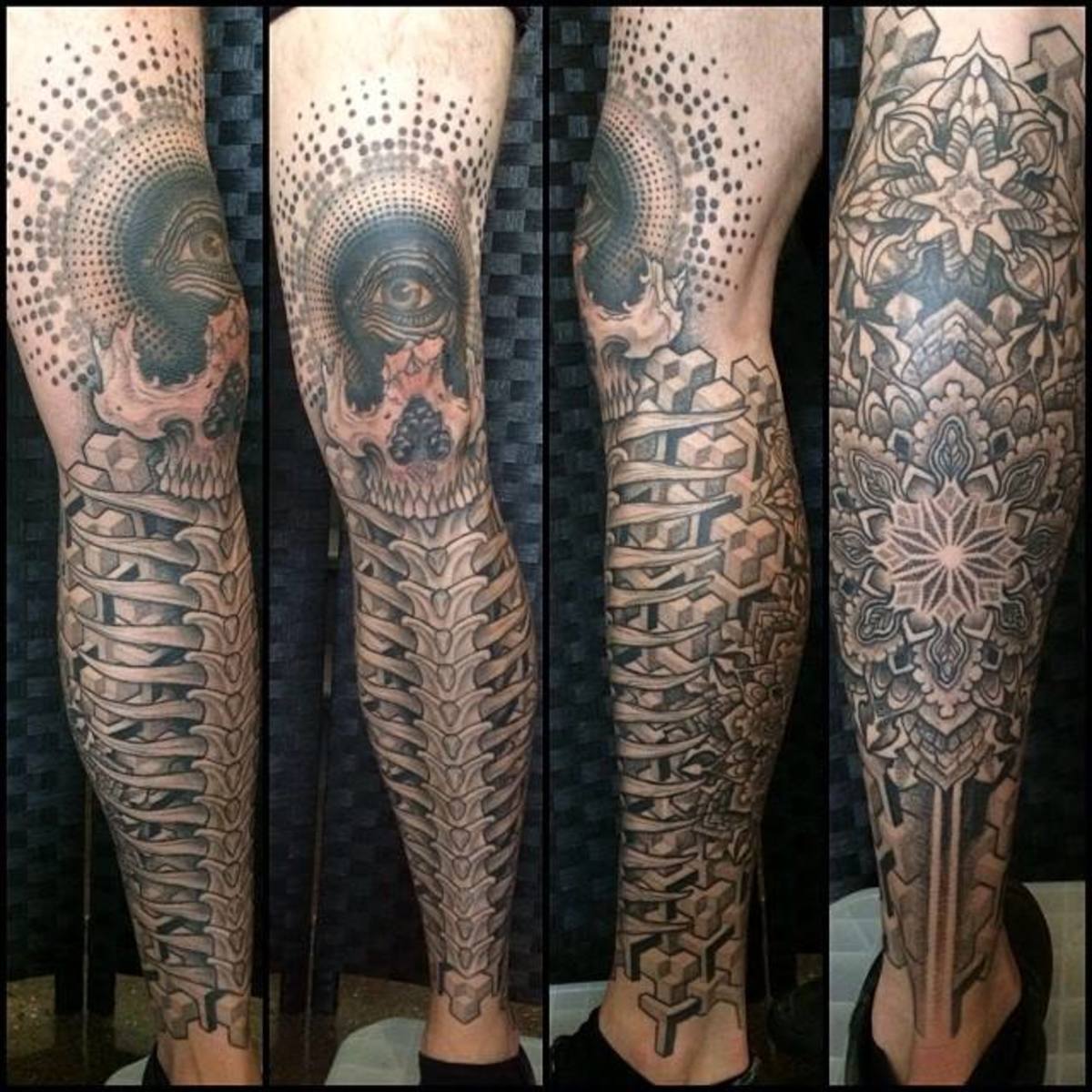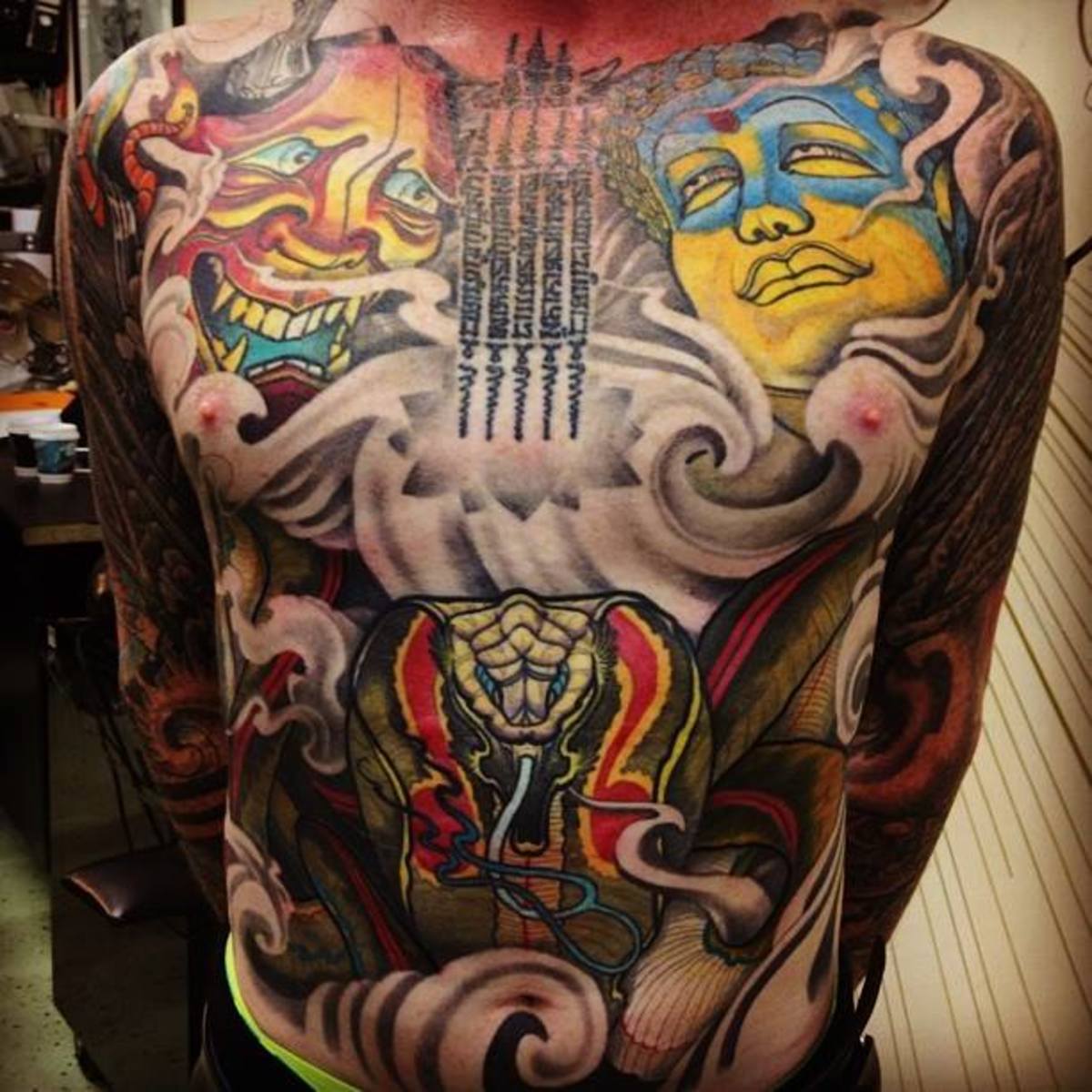
What to Do Before You Get a Tattoo

Getting a new tattoo is similar to having a minor medical procedure done. Your skin is penetrated by rapidly moving needles that deposit ink beneath the top layer of your skin. Once completed, your tattoo is in fact an open wound, prone to infection and requiring care.
Now, nobody in their right mind would turn up for their medical procedure without having followed the doctor’s recommendations of pre-care. And they certainly would follow all further aftercare instructions in the hope that their wound will heal well and not require any further medical intervention.
Key Points
Considering you’re about to spend quite a fair amount of money on your new piece of body art, it’s smart to learn how to:
- Prepare yourself and your body for your tattoo—the more comfortable and prepared you are, is the longer you will be able to sit.
- Look after your tattoo once you’ve had it done—help avoid infections so you’ll heal without any damage.
- Invest in aftercare lotions and an anti-bacterial wash.
Proper pre-care and aftercare will help with the entire tattoo healing process and prevent fading or loss of ink.
Proper pre-care and aftercare will help with the entire tattoo healing process and prevent fading or loss of ink.
Pre-Tattoo Consultation With Your Artist
Arrange a pre-tattoo consultation with the artist you have selected. Your meeting should be at the studio where you will get your new tattoo done.
This appointment gives you the opportunity to check out the studio itself. See where you will be sitting, learn what their infection control procedures are, and ask any questions you may have.
One of the main reasons for your pre-tattoo consultation is to discuss the design of your new tattoo and its positioning on your body. Your artist could possibly draw a quick outline of the shape of your limb on a large piece of paper for a size reference. This may be done if they want to pre-draw your design on a stencil for when you arrive.
Describe your feelings/ theme
Describe to your tattoo artist the feel or theme you wish your tattoo to have. Express color, size, and placement choices. Bring along any reference material you may have, including pictures, colors, and examples.
Remember, this is your tattoo. Do what you want with it, but take into consideration the artist’s professional suggestions and opinions. That is what you are ultimately paying them for: their skill, knowledge, and previous experience with tattooing.
Ask questions
Once you have discussed your design, make sure you ask all the following questions.
- Approximately how much will this tattoo cost?
- How long do you estimate it will take to complete?
- How long will each session last?

What to Eat and Drink Before and After Your Tattoo Appointment
When a tattoo is being inked, many tiny needles are piercing the skin. This can create unwanted bleeding. To avoid excessive bleeding and potential damage…
- do not drink alcohol 24 – 48 hours before your session,
- stop coffee intake
- avoid taking aspirin for pain relief.
Alcohol, coffee, and aspirin are commonly known blood thinners and could result in additional unwanted bleeding.
Increase consumption of foods that contain vitamin C, such as citrus fruits and sweet vegetables i.e sweet potato, cauliflowers, and broccoli. This naturally occurring medicine from Mother Nature aids the body’s tissue repair and tissue recovery processes.
Drink a lot of healthy fluids, such as…
- water
- soup
- juices
- herbal teas
It is extremely important to maintain your fluid levels while being tattooed, as dehydration will intensify the discomfort, give you a headache, and make you feel ill.
Do not skip the meal prior to attending your appointment. Provide your body with plenty of sustenance and fuel to last a good few hours on the tattoo table.
The night before is not a party night. You will need to get a full night’s sleep.
Once you’ve received your tattoo, increase your consumption of garlic and onion. Many naturalist believe they assist in healing due to their anti-microbial properties.
Resist consuming…
- dairy products: milk, cheese, cream, etc.
- processed foods.
- sugar.
This is due to the belief that they slow down the body’s healing process.

What to Wear and Bring to Your Tattoo Session
- Wear comfortable clothing that offers easy access to the body part getting the tattoo.
- Take an extra pair of clean socks to wear. Make sure they’re washed and not full of holes.
- Have an extra jacket or sweater for when you start to feel the cold. Sometimes, especially when you’re having a long tattoo session, your body will begin to shiver. This is an indication that your body is going into shock. Keeping warm will help minimise your discomfort.
Some other items to consider putting in your bag:
- Music and earphones
- Tic-tacs or breath mints
- Water bottle
- Snacks and nibbles
- Change of clothes
- Tattoo aftercare cream
- A support person (if your studio allows one)
- Camera
Be a Hygienic Client
During your session, you and your artist are going to be getting right up in each other’s personal space for quite a few hours. This includes getting your naked bits out and breathing each other’s air.
Make the effort to be a considerate and hygienic client. Don’t be the funky-smelling customer of your tattooist’s nightmares. So before you leave home, make sure you…
- brush your teeth.
- shower using soap.
- wear fresh, clean clothes.
- bring Tic-Tacs or breath mints.
- don’t overdo deodorants, perfumes or colognes.
- tie your hair up in a ponytail.
- if your feet smell like death, don’t take your shoes off.
You wouldn’t think I’d have to put this paragraph in, but ask your tattooist about the foul-smelling people they’ve had to work on…!

Tattoo Aftercare Procedures and Products
Next to actually getting your tattoo, effective tattoo aftercare is the most important aspect of the process. The healing of your tattoo can take up to a month, sometimes more.
Follow the aftercare steps below.
- Purchase aftercare cream or lotion prior to your appointment.
- Ask the artist to use your provided aftercare cream once they have completed the tattoo.
- Keep your tattoo wrapped from when you leave the tattoo studio, until you get home and into a clean environment.
- Wash all plasma and ink off with an antibacterial soap, within one to two hours.
- Apply aftercare cream sparely.
- Wrap your tattoo when you’re wearing irritating, tight clothes, that may rub and damage your tattoo. Also wrap the tattoo for bedtime for the first three to five days.
- Ensure there is plenty of time where your tattoo is not wrapped and is exposed to clean, fresh air.
- Avoid dirt and infection.
Here is where you consider that tattoos are for life and all that other jazz, I don’t need to go over that, you should have already considered this fact.
Tattooing your face, hands or neck is really a job-breaker and some artists will not tattoo those area’s for a reason, but that’s your deal if you’re going there.
Now, tattoo’s hurt. Yes, a heap of needles are being repeatedly scraped over your skin, it is really not a joyous occasion. There are products available, that will help with minimizing your pain and discomfort.
Good tattoos aren’t cheap and cheap tattoos aren’t good. Make sure you Find a Good Tattoo Artist Anywhere in the world. if you want the tattoo of your dreams.
Good luck with your new tattoo. Hope it all goes well and you love your newly acquired piece of body art!
Original Source: https://tatring.com/getting-tattooed/Prepare-New-Tattoo-Before-Tattoo-Design
Anne more –As a self-proclaimed tattoo commentator and writer, I rely on my personal experience and time working in a tattoo studio.Contact Author
